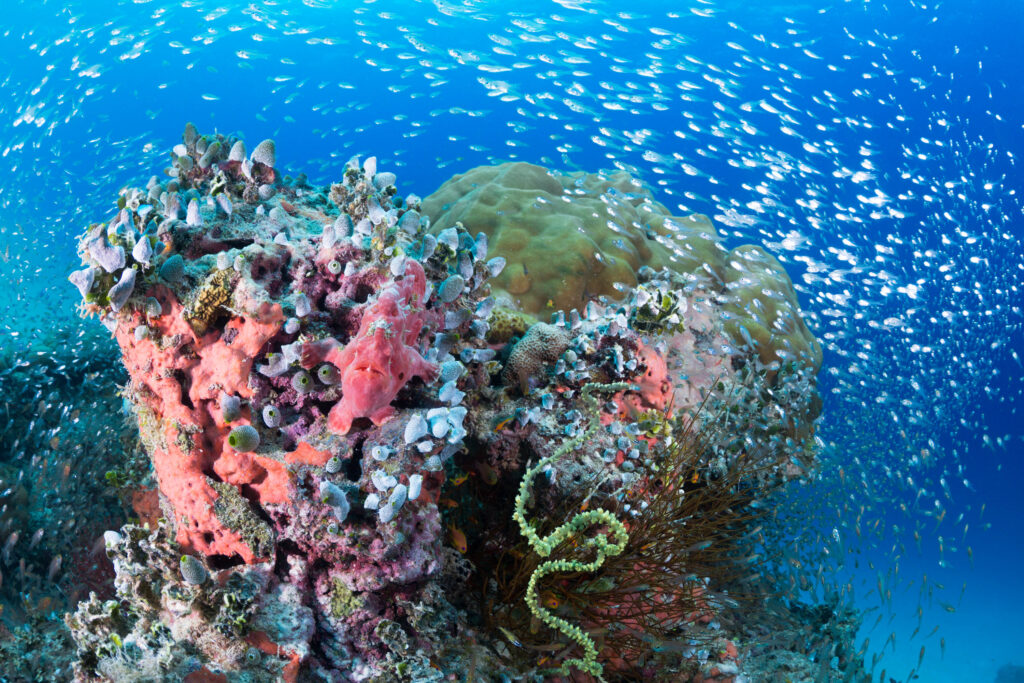In November 2016, I sat in a crowded lecture theatre in Malé, capital of the Maldives, feeling confused. I was at the Maldives Marine Science Symposium and nearly every presenter was speaking about coral “restoration” – trialling ways to grow coral to help coral reefs recover from damage caused by bleaching due to climate change, pollution and coastal development.
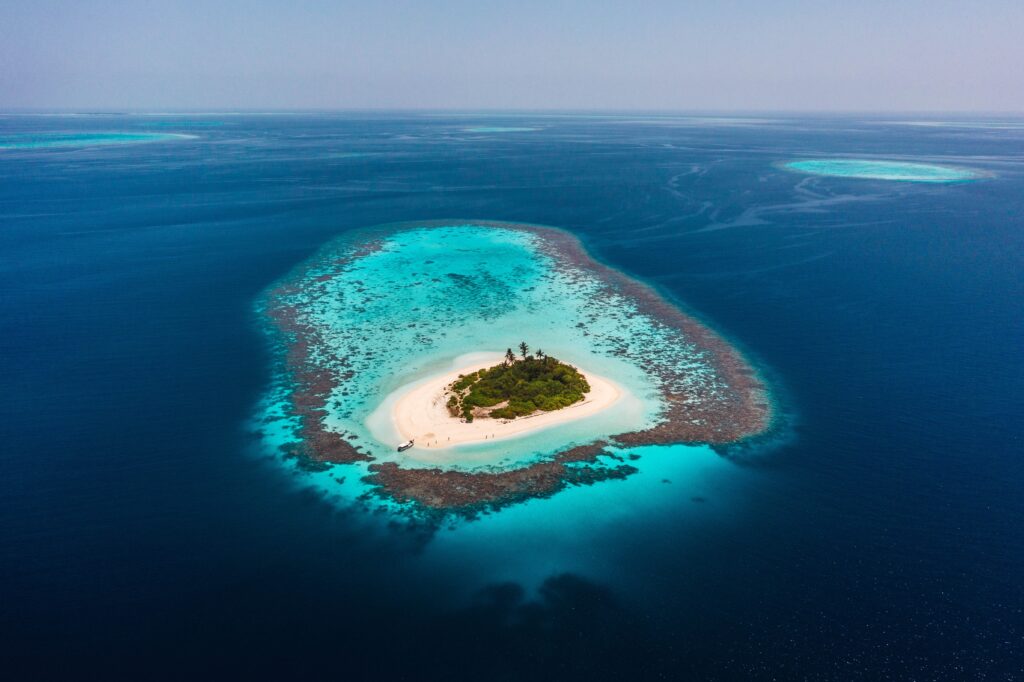
I had read about the various ways you can restore a reef but most of the speakers were presenting about “fragging’’, the practice of breaking off pieces of coral from the reef or collecting ones that have already broken off and attaching them to strange looking underwater structures using plastic cable ties. Once the corals have grown, they are transplanted to natural or artificial reefs.
Questions began to race through my mind. Why were none of these resorts doing fisheries projects – which you might expect them to be as there is a symbiotic relationship between healthy populations of reef fish and healthy reefs? How had this kind of gardening with coral become a trend? Who was looking at how these projects were done and deciding whether they were doing more harm than good?
A year later, coral restoration was back on my radar. I was invited to a meeting with a company, to discuss their new coral restoration programme. The company claimed they had restored several hectares of reef in an Indonesian Island where the reef had been bombed by blast fishing. The programme was certainly remarkable. The team had secured support from the Indonesian community, who started to take a leading role in the project by planting the corals themselves. Coral restoration was also clearly needed in this area, where dynamite fishing had destroyed the physical structure of the reef and left nothing but rubble. The project worked, given the circumstances, but what did not fill me with confidence was the cost and scale – the cost was very high, the scale was very small. It had cost a quarter of a million US dollars to restore a single hectare of reef.
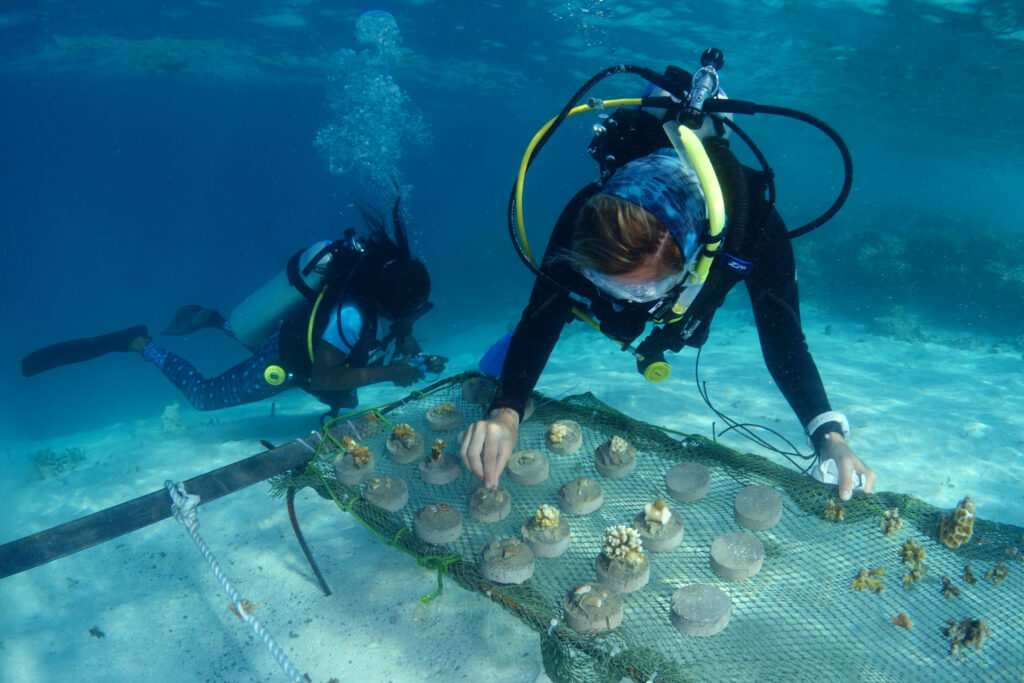
Yet, according to a study by Dirk Zeller and Daniel Pauly, two of the world’s leading fisheries scientists, it cost 96 US dollars to protect each square kilometre of reef within Papahanamokuakea Marine National Monument which equates to a cost of 0.96 US Dollars per hectare. This is one of the largest marine protected areas (MPAs) in the world which is in the Northwestern Hawaiian Islands and covers an area of 151 million hectares. Admittedly, costs vary and creating small MPAs is more expensive but, even in the Philippines, it cost 102,591 US dollars per square kilometre or 1,025.91 US dollars to create Biblik MPA-only 0.2km2 in size.
I left that meeting feeling frustrated. One of the wealthiest companies in the world wanted to help coral reefs, yet had decided to fund coral restoration, arguably the least economically effective way of doing so. When did coral restoration by artificial means – instead of re-creating the best conditions for nature to do it by itself – start to be perceived as the most viable solution? And should we continue to regard it as such?
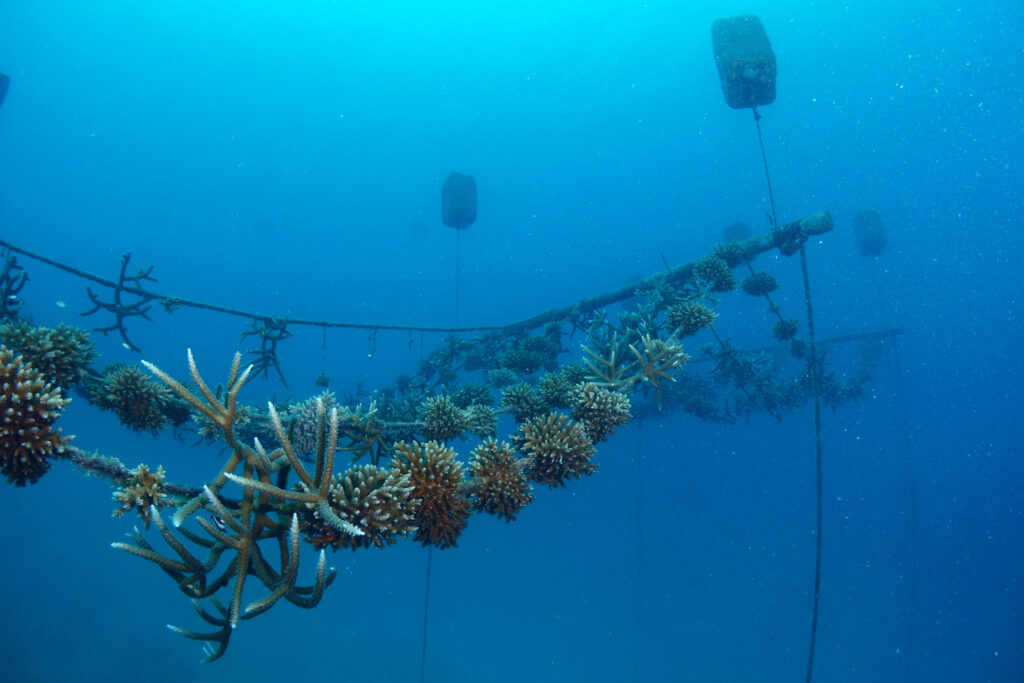
Coral reefs are one of the most threatened ecosystems on our planet. They have been exploited on a local scale for millennia. However, within the past 20 years it has become evident that the global effects of climate change present the biggest threat to coral reefs. Rising ocean temperatures are predicted to drive the total loss of coral reefs across the planet, some say by as soon as the middle of this century. This prediction is disturbing, scary and often demoralising. It can make us feel like we are fighting a losing battle. It is not entirely surprising that everyone wants to help in any way they can. The desire to help might be why the past two decades 20 years have seen a surge in coral restoration efforts across the world.
But coral restoration in the expensive, artificial way currently practiced will not save coral reefs. Building new “reefs” will not solve the problems threatening the reefs that already exist. We must address local and global threats to reefs, or we will waste time growing corals that will not survive because underlying issues have not been addressed.
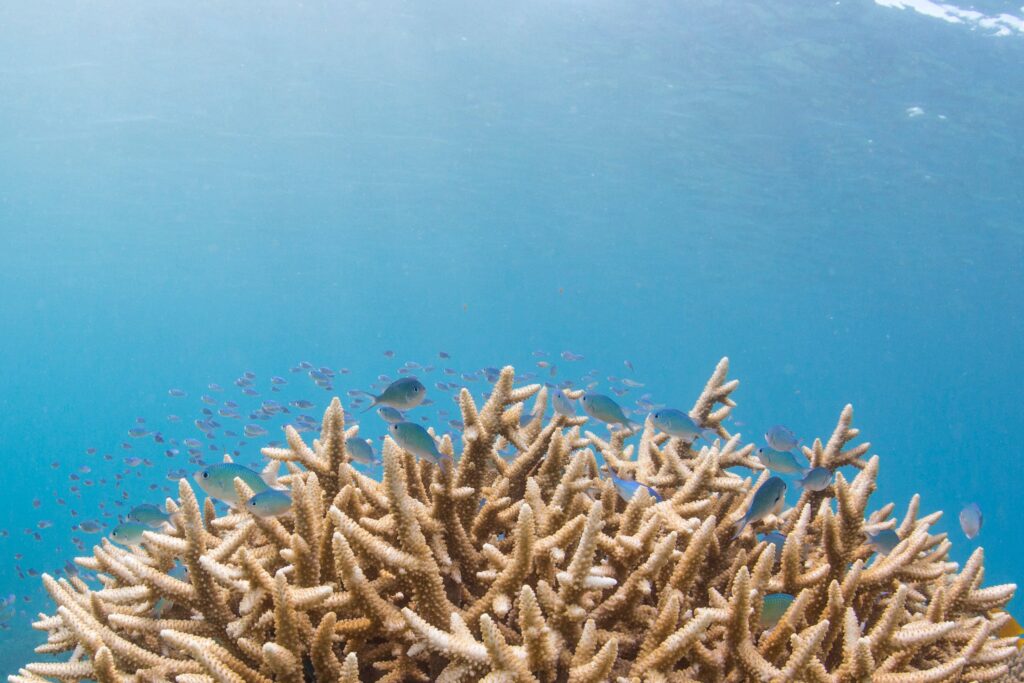
While we as individuals can only do so much to challenge climate change, there are practical solutions we can implement to slow the loss of coral reefs at local scales. We can manage the way we exploit reefs through MPAs and managing the way we fish. There is a wealth of evidence proving that creating MPAs off limits to fishing allows fish populations to increase in number and individuals to increase in size. Protecting fish improves the health of reefs, as healthy fish populations allow reefs to withstand and recover from climatic events like coral bleaching. Often when a reef experiences a disturbance, harmful algae displace coral. However, if a reef has healthy populations of herbivorous fish- – like parrotfish – they will feed on the algae and prevent this from happening. We can also manage how we pollute coral reefs by reducing land-based sources of pollution including coastal development, deforestation, agricultural runoff, and oil and chemical spills.
Coral restoration will never be able to fully restore a coral reef to its historical state with all its original species. It’s unlikely it will come close. Most restoration projects only ever manage to successfully grow a handful of species. Coral reefs are ancient ecosystems honed over more than 200 million years. Once a reef is destroyed, even the most sophisticated and expensive restoration methods available cannot restore it to its former glory. Professor Mark Eakin, Coordinator, NOAA Coral Reef Watch and Chief Scientific Advisor for Chasing Coral says “Rescue and restoration projects aren’t going to save coral reefs on a global scale. Reefs globally cover an area the size of Wyoming, while the total area of restoration projects might be comparable to the size of a backyard.”
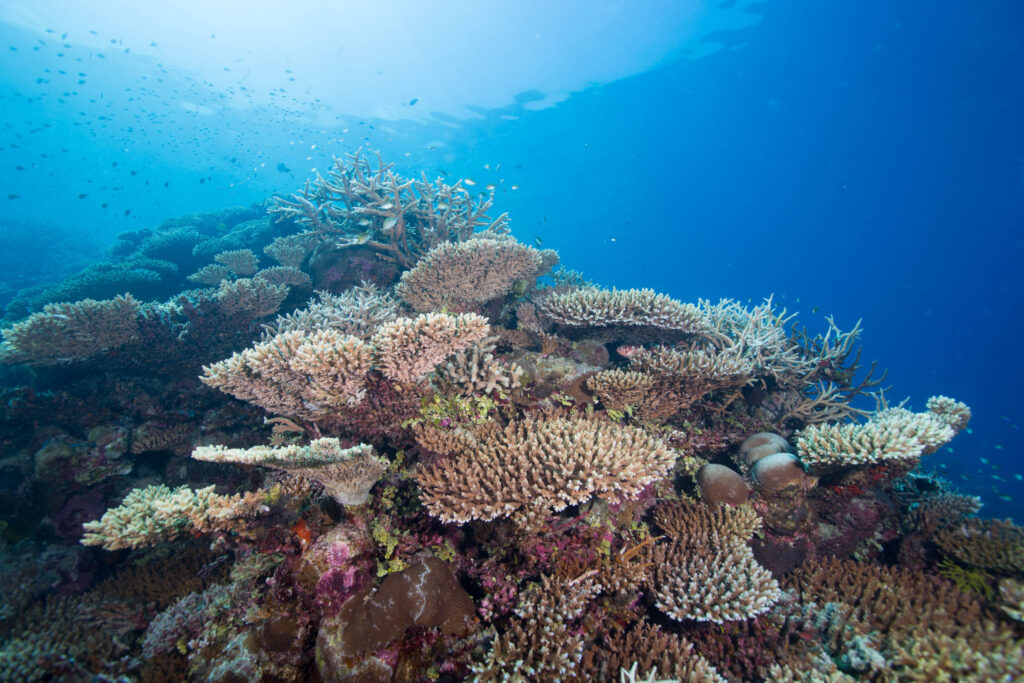
Businesses and the media are responsible for sensationalising coral restoration and creating an impression that it can do what it cannot. You only need to type the term into Google to find phrases like “a new hope for corals” or “new science could save dying reefs”. If you do the same on Instagram, it will bring up alluring images of Acropora corals hanging from ropes or spider frames. Unless you are a marine biologist or particularly well versed in coral reefs, why wouldn’t you think that coral restoration would be the solution?
Earlier this year, I experienced this first-hand while visiting an island called Dhiffushi in the Maldives. In conversation with a guesthouse owner, I discovered that the local council had plans to reclaim a large area of the island. When I remarked that there was a reef on the other side of the island, he said with total conviction “Ah it doesn’t matter. We can just build a new one. I have seen the resort doing it.”
I became even more concerned about the ramifications of coral restoration after conversations with political leaders. I learnt that large sums of money, to the order of 10 million US dollars, had been secured to restore coral reefs. There seemed to be a genuine belief that coral restoration would actually do this, whereas there is plenty of evidence that it will not.
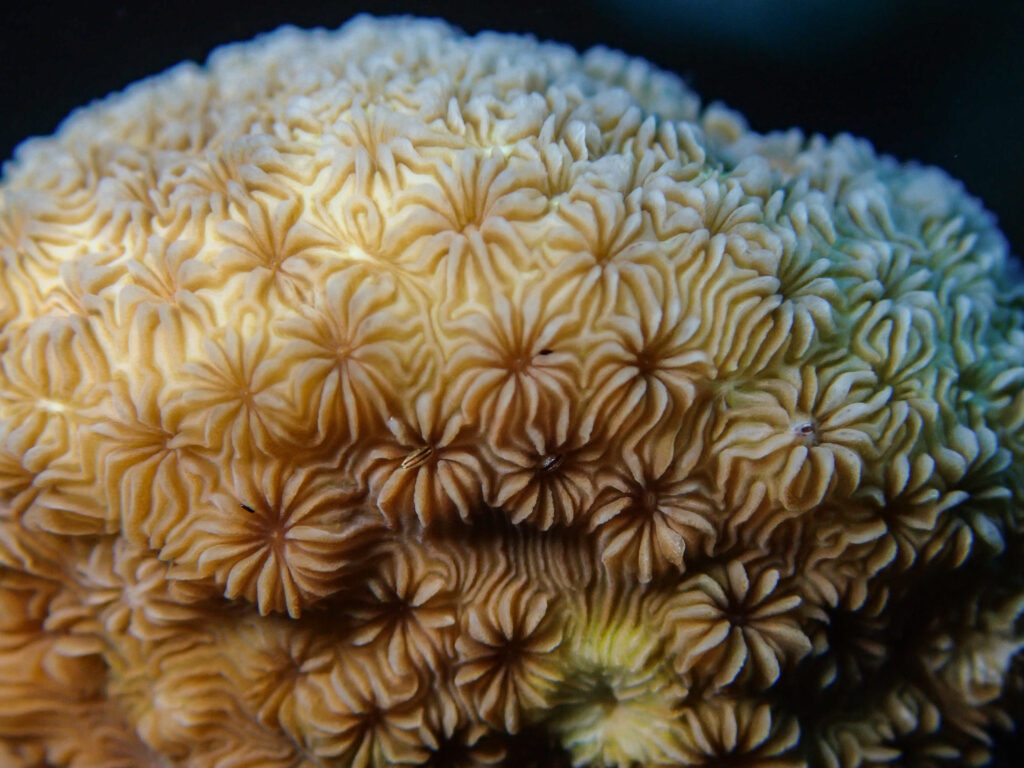
I tried to step down from my ivory tower to untangle how anyone could believe that it was that simple. How arrogant are we as a species to think we can simply recreate these ancient ecosystems? But is it arrogance, or is it just hope and desperation driving people to try and do all that they can do save coral reefs?
Coral restoration is easy, in terms of showing effort. You can report tangible metrics like the number of frames you have deployed or how many corals you have transplanted within six months to a year to prove your “success”. But this doesn’t mean you are improving coral reef health. Determining whether a conservation project improves the survivability and functioning of corals, as well as the host of other animals on a reef, requires years of monitoring. Most restoration projects don’t make it past one year usually because of a lack of resources or poor reporting. It’s much simpler to plant corals instead of the often-arduous task of creating MPAs or managing fisheries, which takes years to see any real progress.
Is coral restoration a crutch helping us to stay optimistic and keep the faith? Or is it a business scam for tourism operators who often charge guests a fee to sponsor a coral frame? I can’t tell.
Professor Yvonne Sadovy hit the nail on the head during a conversation I had with her; “Humans are inherently good at doing things. We are not good at not doing things.” We need to stop exploiting coral reefs to allow them to flourish rather than attempting to “build” new ones.
Creating MPAs and working with people to manage fishing is incredibly hard. There are moments in my conservation career, where I feel like I am fighting a losing battle. But that doesn’t mean we should give up and resort to beguiling easy “solutions” such as coral restoration. Currently, just 27 per cent of coral reefs are encompassed by the world’s MPAs on paper but not all of these are effective. We are failing to do the bare minimum of protecting reefs properly. Planting corals may seem a quick fix for the truly overwhelming task of saving coral reefs, but we must be realistic about what it will achieve. Our firm goals must remain to protect more existing coral reefs from human exploitation.
